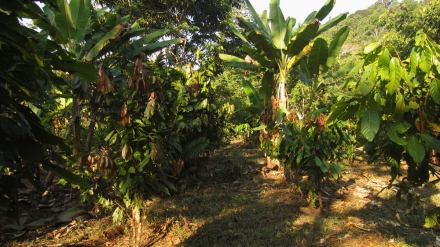It has been some time since the last post. Here we are in the middle of a very DRY “dry season” here in the upper Huallaga River watershed. We have had very little rain the past two months. Thankfully, the creeks are still flowing, though flow levels are diminishing. You can read a recent article in the Washington Post about how things are shaping up in Amazonia this winter
The other big news is that the access road has been repaved with gravel and widened. This situation obviously has its benefits (accessibility) and problems, mainly illegal selective logging in the upper watershed. The local community would benefit, however, by doing what is necessary to protect the primary forests in the upper reaches of the watershed. These forests provide vital ecosystem services for us all downstream, in addition to maintaining water quality, healthy micro-climate, and biodiverse flora + fauna upstream. If this winter is any indicator of things to come, we must do what is necessary asap to prepare for future climatic shocks and extreme weather.





The agroforestry system at Isulawasi continues to mature despite my occassional tinkering by planting and/or opening up the system to allow more sunlight in. I have been integrating more B. caapi vines and P. viridis plants into the system as well as in the upland secondary forest. I hope to brew my second batch of ayahuasca in the coming weeks. The first was made earlier this year with cuttings from a segment of 5 year old vine that toppled a thick hardwood branch. That d’vine decoction was vine only and potent. There were plenty of cuttings for the nursery which I will plant out as soon as we get some rain. The young vine cuttings seem to do best in morning shade/afternoon sun around forest canopy openings. Lately, I have been introducing them into the agroforestry system, planting them at the base of maturing fruit trees and hardwoods. Anyways, the next brew will be a classic B. caapi and P. viridis admixture. My P. viridis shrubs continue to mature having planted the first clones from leaf cuttings back in 2011-2012. I have planted to date some 20-30 specimens. I will plant more since there is space in the agroforestry system. They definitely prefer the shadier parts of the forest garden, but with some hours of sun. Also, we are in the midst of a dwindling cacao harvest season. In total for this season, we have harvested close to 200 kg. (dried). The harvesting will continue this upcoming week. There is definitely lots of work to be done before the start of the “wet” season. Onward!!






